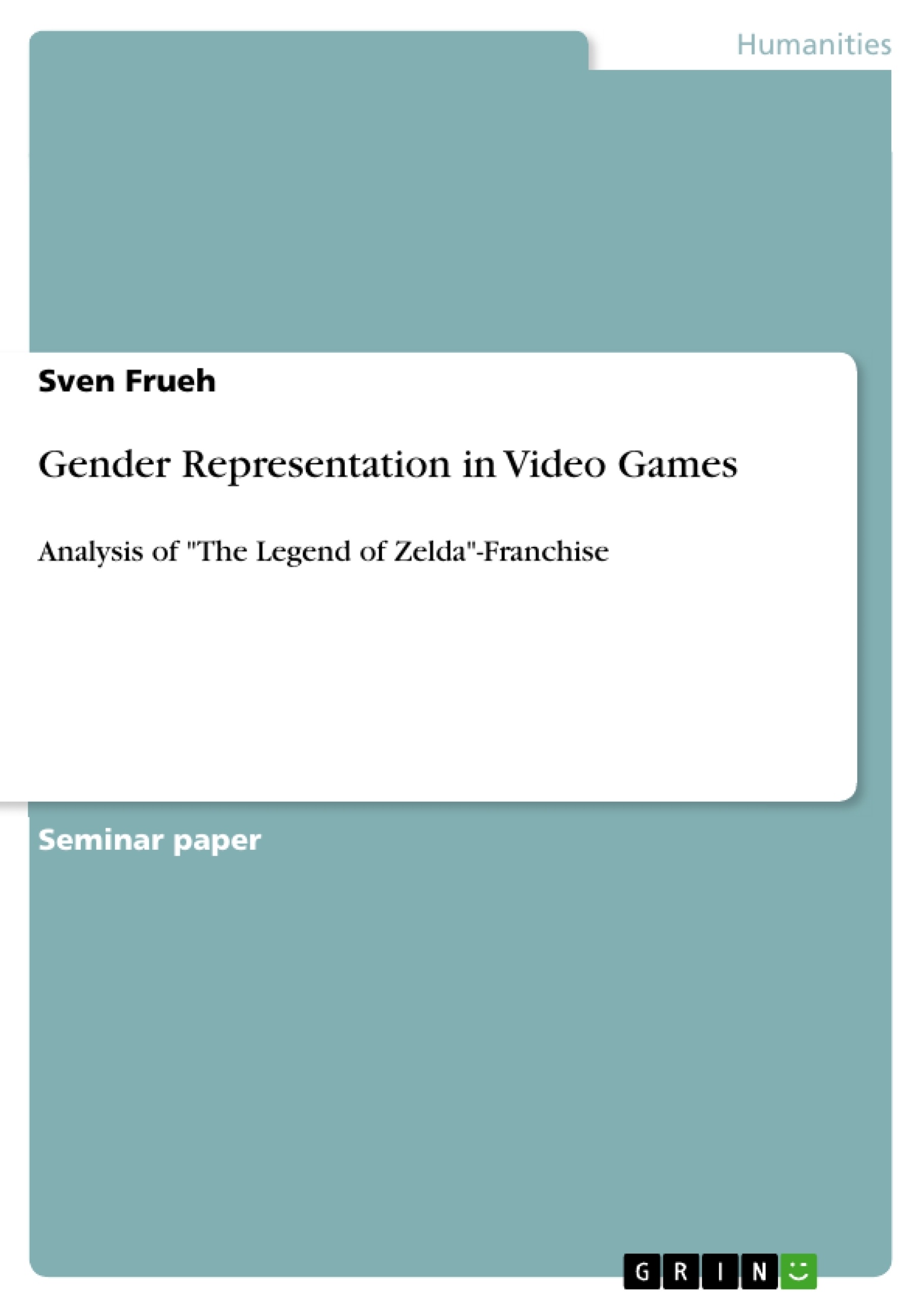This paper aims to examine in how far the portrayal of stereotypical gender roles in video games has changed. For this purpose, one of the oldest and most popular video game franchises “The Legend of Zelda” is analysed using a theoretical framework of both game studies and gender studies. The paper aims to give a game overview of three key aspects – story, picture, and characters – focusing on the portrayal of gender norms, and stereotypes.
Over the past fifty years, video games have taken over a substantial part of the media entertainment industry, with approximately 5,3 million Austrians playing; 90 % of the most active age group, the ten-to-fifteen-year olds, are playing more than once a month. However, the average Austrian gamer is 54 % male and 46 % female, 35 years old, and spends an average of 11,5 hours per week playing. Video games, as well as any other form of mass entertainment media, can influence players’ perceptions and expectations around gender identity and gender roles. The stereotypical portrayal of masculinity and femininity, which was a common occurrence in the early history of video games, is especially problematic in reaffirming gender stereotypes. This materialised in a pattern of white, male, heterosexual player characters being sent on a heroic journey, while female characters were often oversexualised while playing a passive role as a love interest for the main character. In this regard, video game heroes and characters, as well as their narrative, were not different from popular cultural movies, comics, and books of the late 20th century.
Inhaltsverzeichnis (Table of Contents)
- Introduction
- Theoretical Framework
- Gender Studies
- Gender Representation in Video Games
- Game Studies
- Story
- Picture
- Characters
- The Legend of Zelda
- Story Analysis
- Character and Picture analysis
- Male Main Character: Link
- Female Main Character: Zelda, Sheik, and Tetra
- Conclusion
- Primary Sources / Games
- References
Zielsetzung und Themenschwerpunkte (Objectives and Key Themes)
This paper aims to explore the evolution of gender representation in video games, specifically within the renowned The Legend of Zelda franchise. By employing a theoretical framework combining game studies and gender studies, the paper analyzes three key aspects – story, picture, and characters – focusing on the portrayal of gender norms and stereotypes.
- The impact of video game media on players' perceptions of gender identity and roles.
- The prevalence and persistence of stereotypical gender portrayals in video games, particularly in relation to the "damsel in distress" trope and the sexualization of female characters.
- The potential for change in gender representation in video games as the industry has grown and public opinion on gender roles has shifted.
- An in-depth analysis of The Legend of Zelda franchise, examining how the representation of male and female characters, narratives, and visual elements have evolved across different titles.
Zusammenfassung der Kapitel (Chapter Summaries)
The introduction provides a background on the evolving landscape of video games and their influence on gender perceptions. It highlights the historical prevalence of stereotypical gender roles in video games and suggests that the industry might have responded to changing societal norms.
The theoretical framework section dives into the concepts of gender studies, examining how gender is constructed and the implications of "doing gender" in video games. It explores the distinct portrayals of male and female characters in video games, highlighting common tropes such as the "damsel in distress" and the sexualization of female characters.
Schlüsselwörter (Keywords)
This paper primarily focuses on the concepts of gender representation, video games, gender stereotypes, game studies, gender studies, The Legend of Zelda franchise, and "doing gender." It examines the interplay of these concepts to understand how video games, particularly The Legend of Zelda series, have shaped and reflected societal views on gender identity and roles.
- Arbeit zitieren
- Sven Frueh (Autor:in), 2021, Gender Representation in Video Games, München, GRIN Verlag, https://www.grin.com/document/1002058



